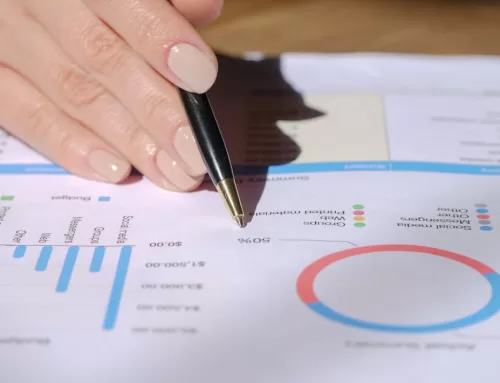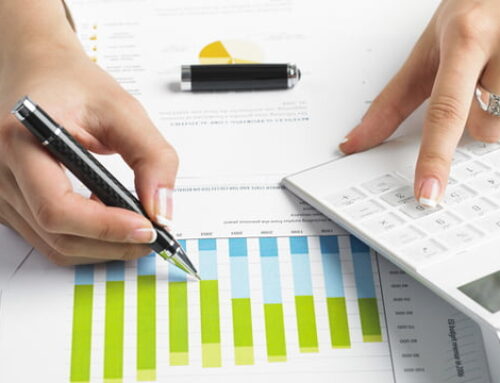Since the 1980’s, dramatic improvements have been made in POS (Point Of Sales) and related data-warehousing systems by the big-box retailers (Walmart et al). These sprawling conglomerations of interconnected hardware and software cost millions to build and maintain and are housed in huge, specially designed buildings with enhanced power, security and environmental features. Over the past few years, however, powerful cloud-based versions of these systems, adapted for smaller retailers, are increasingly available and affordable. So for the many retailers still using antiquated systems – what to do? One choice of course is to do nothing, save some money and stick with the current setup (“if it ain’t broken don’t fix it”). But eventually there will be pressures to exploit the power of modern systems designed to address the needs of small retailers. In fact, just what are these features that might well help the new system pay for itself in a short period of time and give a competitive edge?
Spreadsheets and QuickBooks
Many retailers use MS Excel spreadsheets, Intuit QuickBooks or a combination of both to run inventory and accounting. Spreadsheets are great tools that can help keep track of data such as inventory in the store, and are certainly a step up from spiral notebooks, huge paper ledgers, and thick wads of paper-clipped purchase orders. But as the business grows, relying too heavily on spreadsheets and other informal systems can be costly. First, manual data-entry will always be plagued by error. You may endure a small error rate, or a large one, but errors are a certainty. Mistakes can cost a lot of money. Bar-code scanners that count and enter data directly into a POS are faster and much less error-prone.
Besides spreadsheets, many retailers use a back-office system such as QuickBooks to get the accounting done and produce financial reports. These are fed with manual data-entry after information is collected from the floor and manipulated into increasing numbers of spreadsheets (described above). QB is great at accounting and reporting, but does not offer the granularity needed by decision makers in making the many nuanced, day-to-day decisions required to get the best out of a retail store location.
Secondly, as the business grows, the overall situation becomes increasingly complex. That’s bad news for the bookkeeping and data-entry staff who must keep all of this updated even among increasing numbers of business rules. (Example: maximizing volume purchases from various vendors). These tasks are more effectively performed by computers (the backbone of your POS).
Next, data can be more effectively utilized if all is resident in a single system (versus many disparate records and spreadsheets) and even more so when this data updates automatically with every sales and purchase transaction.
Retail Store Management Systems
POS systems for smaller retailers (well, smaller than Walmart) should perhaps be a little less humble and go under the name “Retail Store Management Systems” since they commonly run many aspects of the retail business. From inventory management to data analytics, sales processing and employee management, modern cloud-based point of sale software can help store executives manage single or multiple locations, and often offer ecommerce capabilities as well.
Let’s quickly look at each of these areas where POS / Store Management Systems can make a big difference and provide a competitive edge: Sales, Store Management, Accounting, Ordering, and Engaging Customers.
Sales Management
Modern POS systems can help boost retail sales by designing and offering automated promotions that run for a predetermined time frame – and way beyond what mere humans can remember. These can also increase efficiency and protect the business with EMV compliance and integrated payments. Additionally, some vendors offer the ability of running the entire store from one app or device such as an iPad, offering much greater mobility for the sales staff. Finally, management can enjoy greater flexibility in designing the store layout and checkout experience including hardware such as barcode scanners, cash drawers and label printers as well as the core retail POS system server.
Retail Store Management
Store management systems offer powerful insights into inventory through software that watches and keeps stock levels exactly where they should be, by understanding re-order points and minimum order quantities. These systems also allow the return of defective, damaged or overstocked products easily through Return-to-Vendor features. And it’s easy to expand inventory of fast moving products by finding and adding new vendors from preloaded catalogues. Finally store management is simplified by features allowing better employee management with metrics such as work hours tracking and sales-per employee per hour.
Accounting
POS systems typically do not offer a full range of accounting features, so integration with programs such as QuickBooks is essential. A good integration will allow the programs to continually exchange data without special efforts by store staff. For example, sales data can be mapped to various QB accounts and then continuously imported throughout the day. This is faster and largely eliminates the potential for error. Sales data can then be viewed in specially customized management dashboards based on information gathered from all sales of all product at all store locations. Management is then focusing on managing – rather than making sure that data entry is correct and up to date.
Ordering
Ordering of inventory can seem complex at times – and it is. But modern POS systems have order management processes to ensure that stock is on the shelves, at the optimal levels, as needed. This is accomplished as the system regulates stock levels by setting inventory reorder points and automatically populating purchase orders. And special customers can get impressive attention by entering their special orders directly into a purchase order. Once again we see a new feature for smaller retailers that was once available only to the largest retail chains.
Engaging Customers
Some POS systems now offer powerful features that were once the privileged domain of the data-warehouses operated only by big-box retailers. For example, a CRM (Customer Relationship Management System) can be connected to the POS, allowing improved special promotions offered to specially identified customers based on their demographics and purchasing behaviors. These offerings may also include layaways, special orders, store credit and otherwise special attention in providing a pleasant customer shopping experience.
Finally, customers appreciate the comfort of seeing every item being scanned with customer facing displays.
Contact us if you’d like to consider adding a Point of Sale System or QuickBooks accounting and offer these features and capabilities at any retail location.







